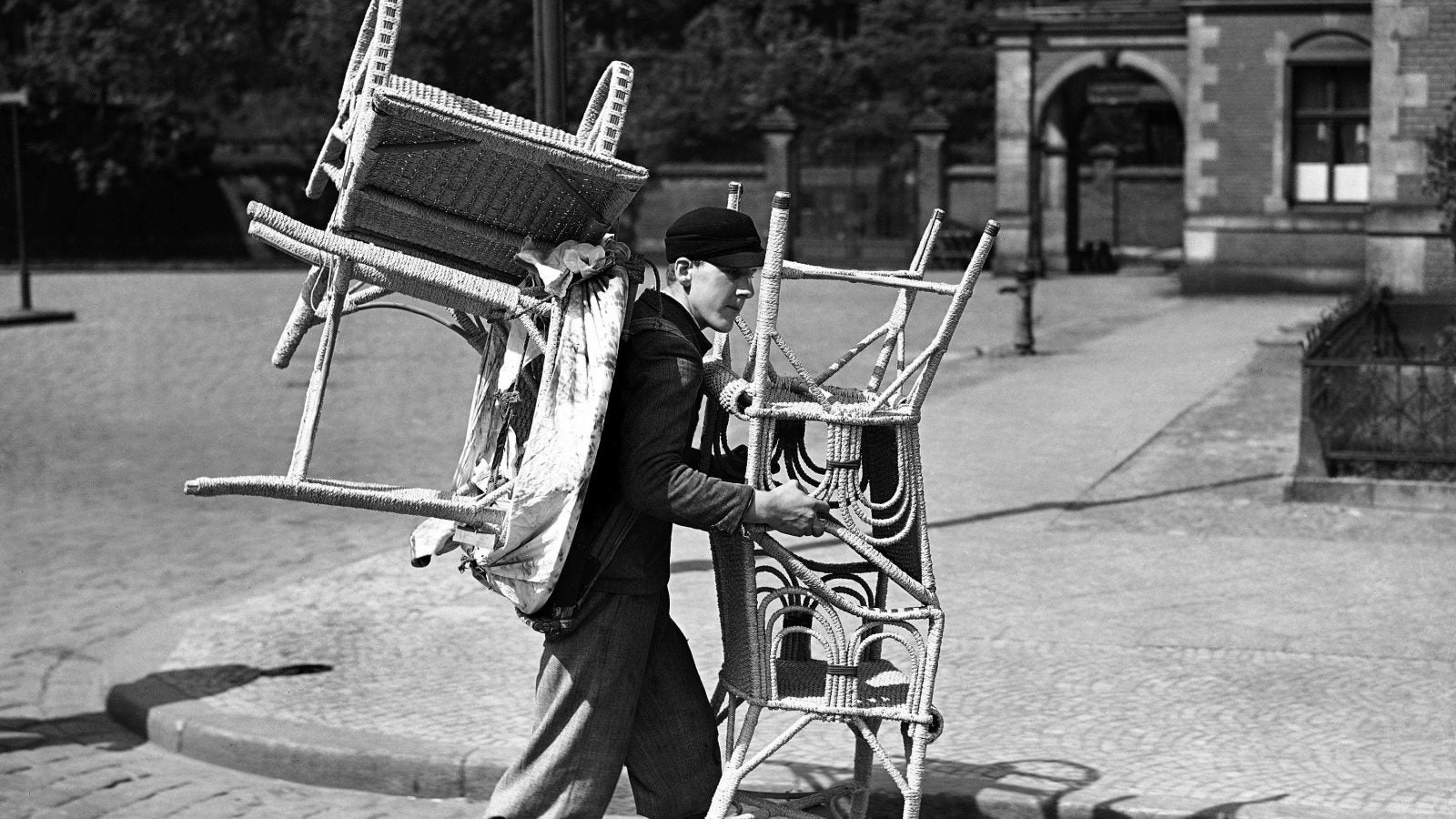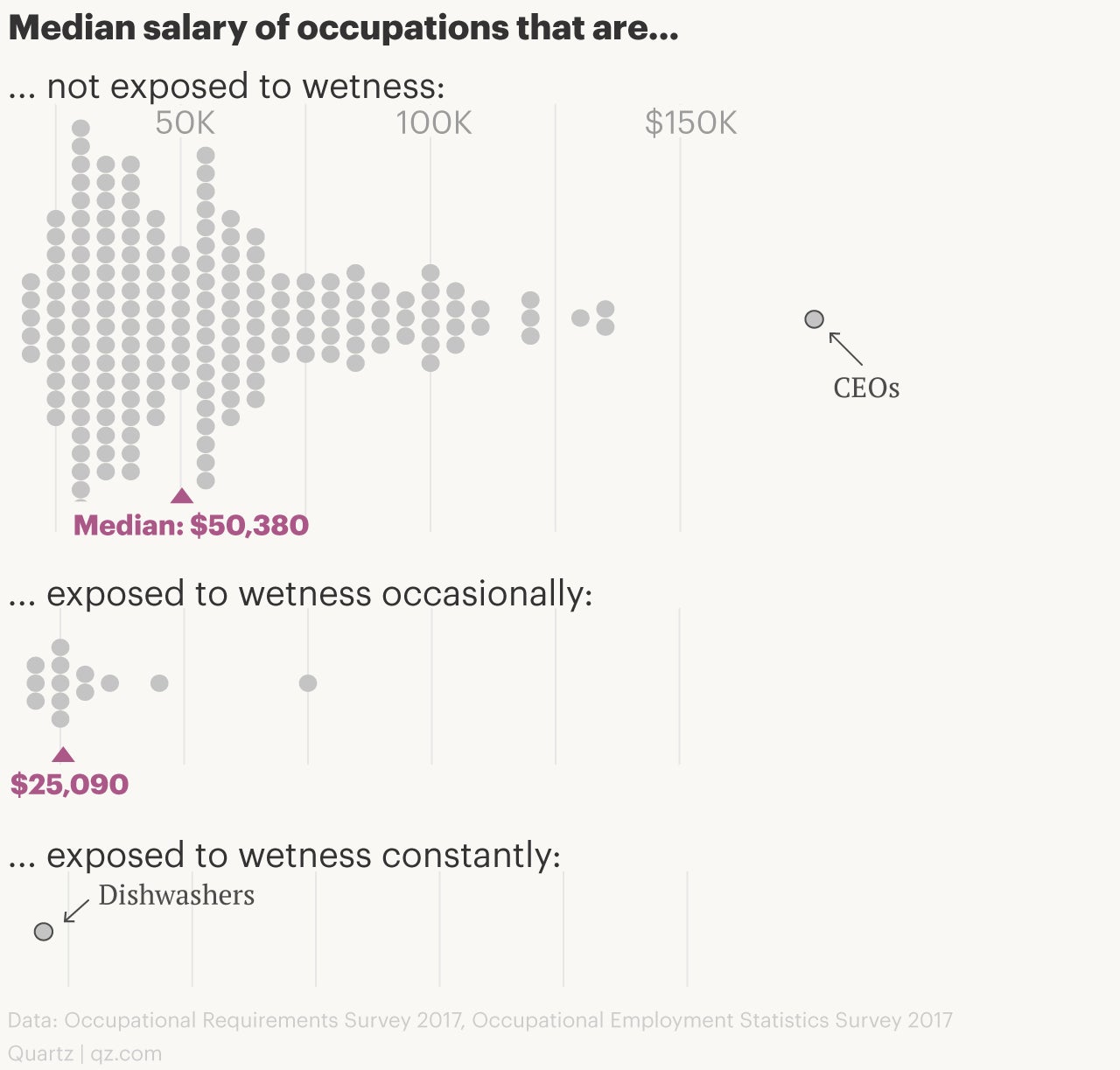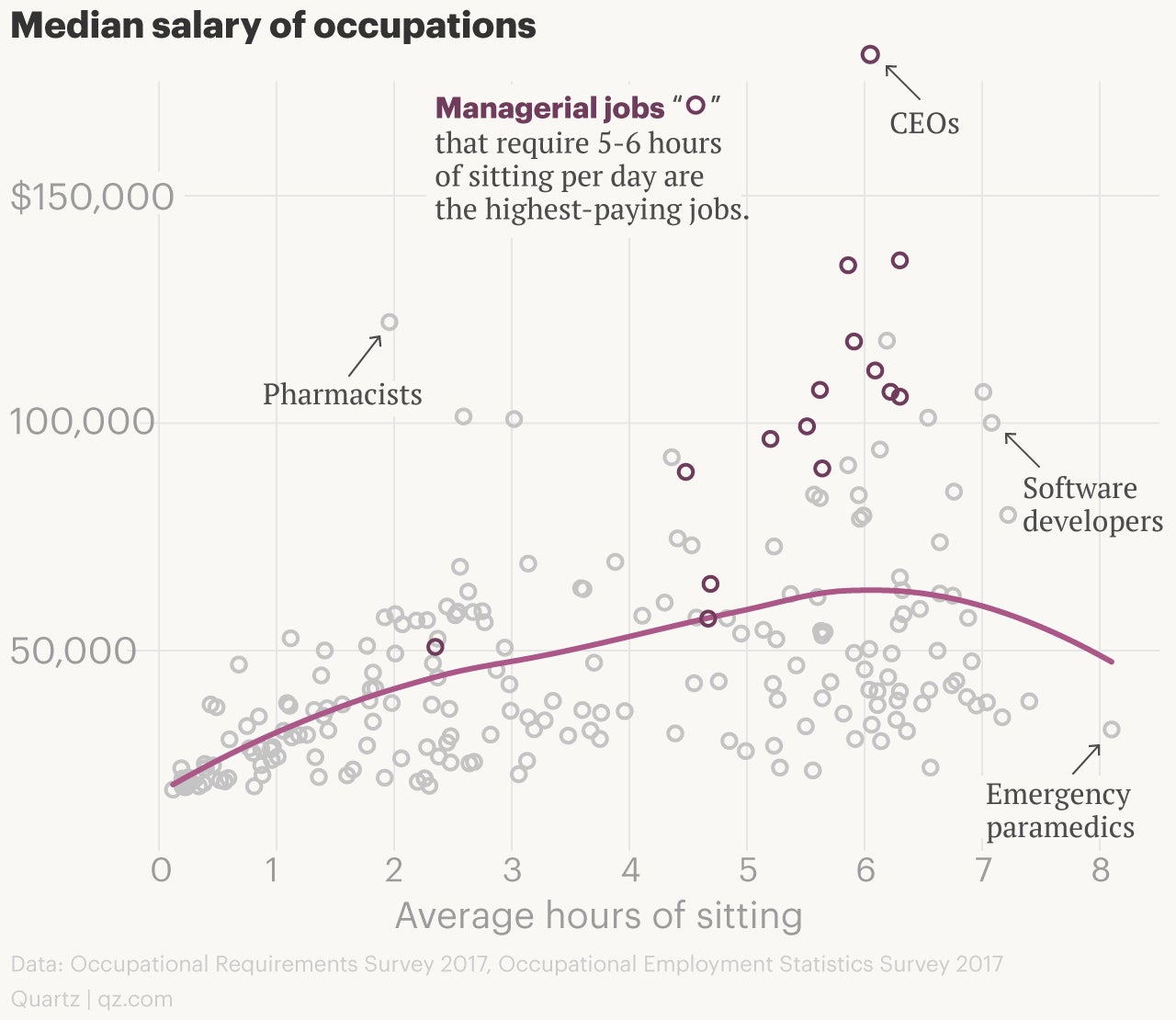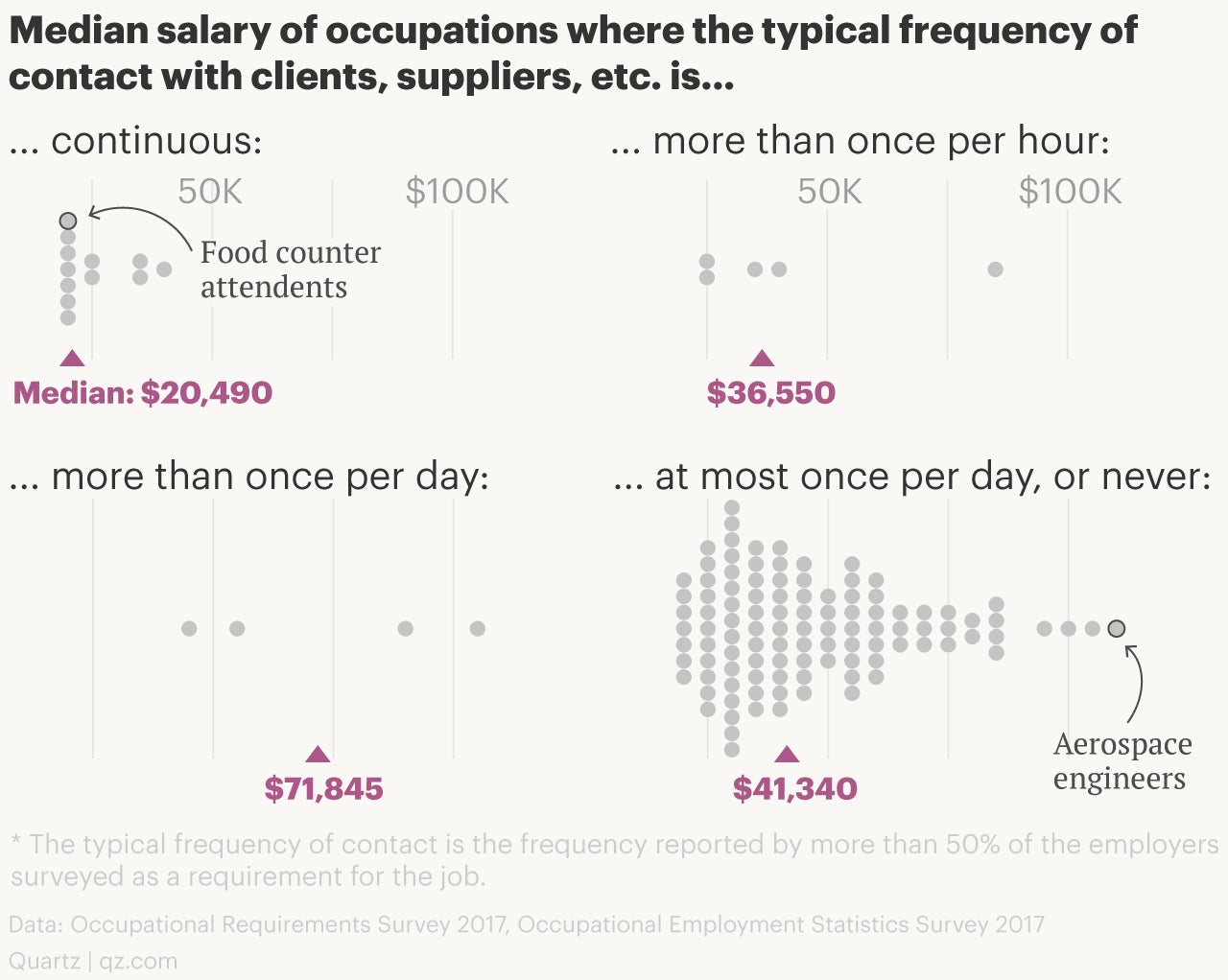The highest-paid US workers sit for six hours, move around for two, and don’t get wet
If you’re getting wet at work, your pay is likely lower than most. US jobs where workers are exposed to “wetness” either occasionally or constantly typically get paid half of the always-dry workforce, according data from the US Bureau of Labor Statistics.


If you’re getting wet at work, your pay is likely lower than most. US jobs where workers are exposed to “wetness” either occasionally or constantly typically get paid half of the always-dry workforce, according data from the US Bureau of Labor Statistics.

The moisture itself isn’t the culprit for lower pay, of course. It’s simply indicative of how certain lower-paying and menial jobs—like food preparation or elder care—require getting a little wet sometimes, whereas higher-paying jobs like CEO don’t.
To arrive at these figures, and others, we analyzed BLS data on job requirements and wages to determine how various features of jobs relate to pay. Here are some other things the data show:
Sitting jobs pay more
An active job—one that requires moving around during the workday—on average pays less than one that just requires sitting at a desk. The data show a correlation between hours of sitting and income. Desk jobs pay more.

The jobs with the highest median pay require roughly six hours of sitting and two hours of standing or walking. Jobs with more than six hours of sitting—such as telemarketers and ambulance dispatchers—tend to pay less. One exception is computer programmers, who sit an average of 7.2 hours a day and get a median pay of $79,800.
Jobs with constant communication pay less
While you might be a people person, jobs that demand constant interaction with coworkers and clients typically pay less. As the data show, the type of jobs that require check-ins with coworkers once or twice a day have the highest median pay, though some of the best-paying managerial positions require hourly contacts with coworkers.

Occupations that require continuous communication with clients, customers, or suppliers also have lower pay.

Fast-paced jobs pay less
Some rapid-paced jobs (like nurses) have an annual median income over $50,000, but most do not. The best-paid managers work at a steady pace.

Picking your career
There’s more to a career choice than maximizing pay, and there are ways to change your working conditions without changing jobs. Desk workers can opt for a standing desk without fear of losing pay. Front-line workers might request shifts in the warehouse or stockroom if customer interactions are getting tiresome. (If you want to have more “wetness” in your office I’m sure none of your colleagues would mind if you washed their dishes)
If you like the style of your current work but want to be paid more, consider switching to a job that still fits your style but happens to pay better. Take our quiz to get a list of jobs that fit your work style, and discover the ones that would increase your pay if you made the switch.